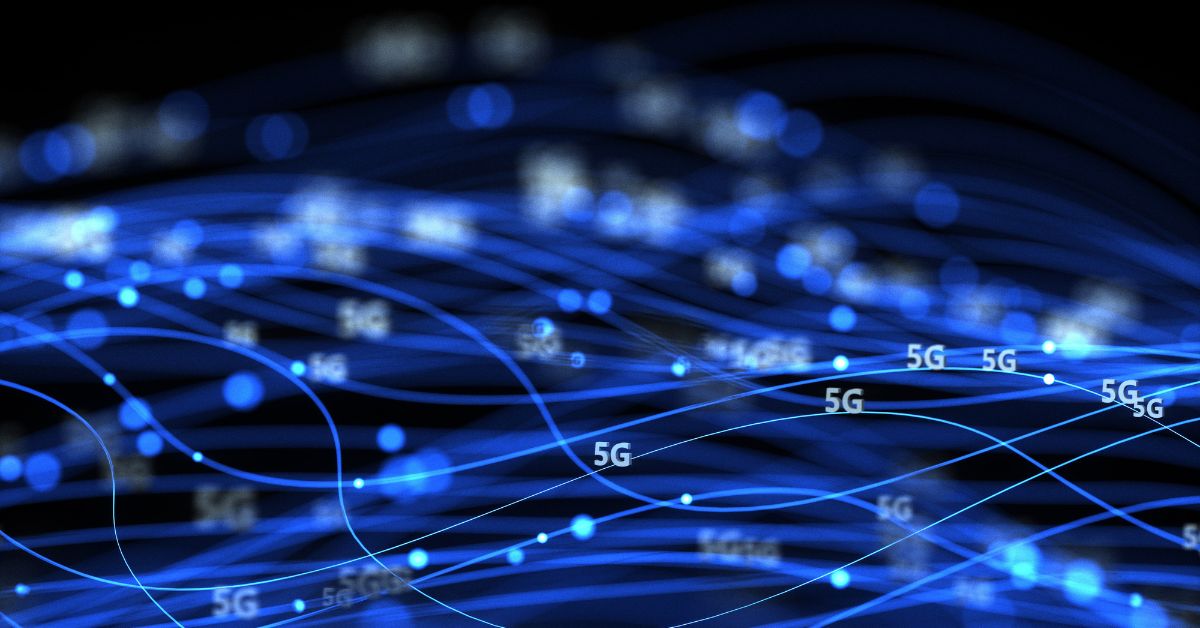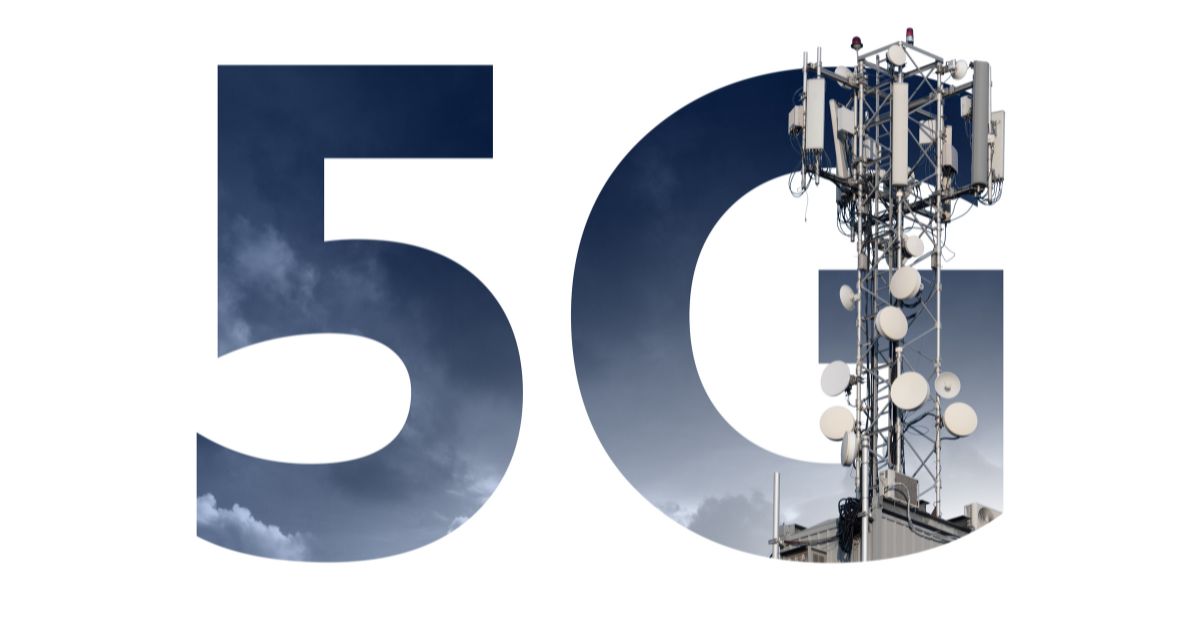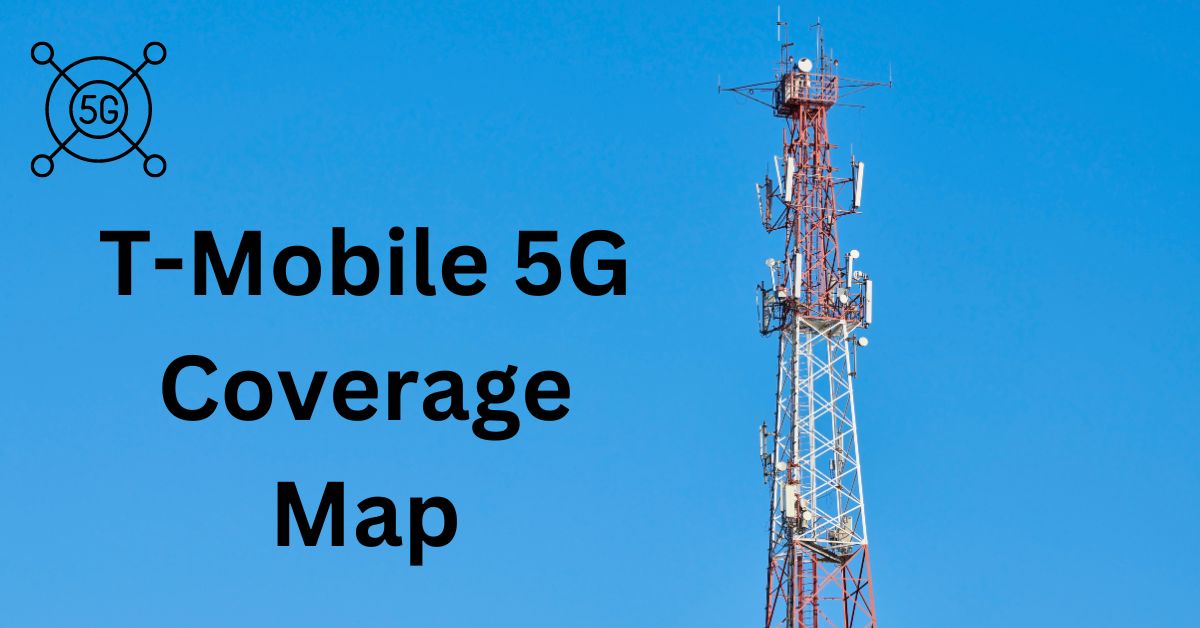Hey, I hope you are happy in life, welcome to our blogs! I hope you like this article of mine. I try to share about 5G internet with you in every article. I always try to share such knowledge with you, which no blogger has given you before today.
Let’s go ahead and get complete information about this T-Mobile 5G coverage map.
Introduction
In the rapidly evolving world of mobile technology, 5G represents a significant leap from its predecessor, 4G LTE. With promises of faster speeds, lower latency, and wider connectivity, 5G is reshaping the way we experience the mobile internet.
T-Mobile, one of the wireless carriers in the United States, has been at the forefront of this shift, aggressively expanding its 5G network.
This blog post takes a detailed look at T-Mobile’s 5G coverage map, assessing its current reach, plans, and how it stacks up against competitors.
We’ll also explore how you can use this information to make informed decisions about your connectivity needs.

Key takeaways
- Extensive Coverage: T-Mobile’s 5G network is one of the most widespread in the United States, covering over 320 million people. This extensive reach is supported by a combination of low-band, mid-band, and high-band (mmWave) spectrum.
- Types of 5G Spectrum:
- Low-Band 5G: Offers broad coverage and good building penetration, making it effective in rural and suburban areas. However, it provides slower speeds compared to other 5G types.
- Mid-Band 5G: Known as Ultra Capacity 5G, this spectrum balances speed and coverage, providing faster speeds and better performance in urban and suburban environments.
- High-Band 5G (mmWave): Delivers the fastest speeds but has a shorter range and poorer building penetration. It is deployed in high-density urban areas where ultra-fast data rates are needed.
- Future Expansion: T-Mobile is committed to expanding its 5G coverage to more rural and underserved areas, as well as upgrading existing infrastructure to improve speed and capacity. Future expansions include integrating new technologies and spectrum bands.
- Competitive Edge: Compared to Verizon and AT&T, T-Mobile offers a balanced approach with extensive low-band coverage, robust mid-band deployment, and targeted mmWave implementation. Verizon focuses on high-speed mmWave but has limited coverage, while AT&T provides competitive coverage but is not as extensive in rural areas.
- Coverage Map Usage: The T-Mobile 5G coverage map is a valuable tool for understanding network availability. Users can enter their address to check current 5G coverage, explore different types of 5G technology, and view future expansion plans.
How to Use the T-Mobile 5G Coverage Map: Step-by-Step Instructions

How to Use the T-Mobile 5G Coverage Map: Step-by-Step Instructions
T-Mobile’s 5G coverage map is easy to use and offers great information on network availability. First, head to the T-Mobile website and navigate through their site until you find the area that deals with coverage maps (usually located under “Support” or “Coverage”).
After that and while you’re on the map, just type an address or zip code to see coverage details for a particular area.
The map includes filters by network type so you can check where 5G, in addition to LTE and 3G coverage too, as well as the ability to zoom in and out on a specific region and use various layers like signal strength or types of 5G offered.
information:
| Aspect | Details |
|---|---|
| Coverage Types | Low-band (Extended Range 5G) Mid-band (Ultra Capacity 5G) High-band (Ultra Wideband 5G) |
| Low-band 5G | Coverage: Broad, good for rural and suburban areas Speed: Moderate, suitable for general use Range: Wide |
| Mid-band 5G | Coverage: More limited than low-band, urban and suburban areas Speed: High, faster than low-band Range: Moderate |
| High-band 5G | Coverage: Limited, typically in urban areas Speed: Very high, fastest speeds available Range: Short |
| Checking Coverage | Use T-Mobile’s online coverage map by entering your address/zip code |
| Device Compatibility | Must have a 5G-capable device to access 5G networks |
| Network Updates | The coverage map is regularly updated to reflect new areas and improvements |
| Rural Coverage | Expanding, but may be limited; low-band 5G is more common in rural areas |
| Cost | 5G access is included in most T-Mobile plans; check specific plan details |
| Contact Information | Visit T-Mobile’s official website, contact customer support, or visit a T-Mobile store for more details |
For forthcoming coverage changes, T-Mobile regularly includes the expected forthcoming coverage changes. This enables users to evaluate the quality of their network and take action to make better choices for connectivity.
T-Mobile 5G Coverage: What You Need to Know Before Switching

T-Mobile 5G Coverage: What You Need to Know Before Switching
You should compare their service with T-Mobile 5G before switching to them. Check T-Mobile’s 5G coverage map to make sure that your area — and the places you’ll be going in the next two years or more if taking advantage of no-charge tethering helps improve remote working for someone far from home at peak times — has good potential 5G vibes.
That will offer you a sense of where there is 5G and likewise the degree of signal high quality in those areas.
Bearing that in mind, take a look at the 5G plans T-Mobile is offering and see if they fit with how you use your phone. Since not all plans have the same 5G access, if it is critical to ensure fast speeds over cellular connections in your new iPhone, then getting the right plan would also be key.
Oh and of course, you should be 5G capable under T-Mobile’s service. Another thing to look out for is that not all devices will work on every type of 5G technology used by the networks so you should make sure your device supports them otherwise it might have issues with connecting.
Comparing T-Mobile’s 5G Coverage with Other Major Carriers: An In-Depth Analysis
A lot of factors come into play when determining how T-Mobile’s 5G maps to those from other big carriers, including Verizon and AT&T.
T-Mobile has been touting its broad 5G coverage in cities as a result of using low-band spectrum (especially when it’s rolling out at similarly capacious macrocell sites supporting LTE), and mid-band holdings.
This pairing gives you access to a lot of choices, some quality and speed.
With Verizon, you get access to the carrier’s ultrawideband 5G network which allows for incredibly fast speeds but is limited ultrawideband meaning it provides excellent speed within a small radius; good enough if you live or work downtown!
AT&T Coverage map as you can see they also offer a feature 5G network but the layer is between low and mid-bandost uoffersregions though, T-Mobile may be offering serious competition in many of those same cities with its superior coverage.
Some rural areas might get nowhere again so just bear that one small thing to mind! Users can Analyze coverage maps and performance data from the PTCRB of each carrier to learn where a network excels at, or more importantly information on areas in which it may fall short helping them make an informed decision based upon your location needs.
Top Cities and Regions with T-Mobile’s 5G Coverage: A Detailed Breakdown

Top Cities and Regions with T-Mobile’s 5G Coverage: A Detailed Breakdown
It is also one of many supported bands for T-Mobile in the US, and this network supports 5G over large areas including major cities.
The wider network coverage has resulted in major cities, including New York, Los Angeles, Houston, and Chicago receiving a lot of benefits from 5G thanks to T-Mobile’s aggressive rollout of the mid-band spectrum.
The future of the internet is literally at our doorstep, with new cities finally receiving their own 5G towers; which will deliver an incredible improvement in speed and response rates to help optimize a plethora of online pursuits.
It also brings 5G to the burbs and beyond. With the rollout of 5G in regions across states like TX, FL, and CA these expansions work to narrow connectivity disparities between urban, metropolitans.
Hence boosting internet speed and increasing online outreach for less densely populated areas.
T-Mobile 5G Coverage Map Updates: What’s New in 2024
5G networks continued to see major updates from T-Mobile in 2024 New markets and market enhancements detail the latest additions to Sprint’s network footprint.
T-Mobile has prioritized expanding into rural areas and strengthening its network for better speed and reliability capabilities this year.
Those new areas with their updated projections are live on the coverage map now, giving an idea of where T-Mobile’s 5G network has expanded and is expected to go next.
The changes are just part of T-Mobile’s effort to improve its network speeds and upgrade the capacity needed for high-speed internet.
Understanding T-Mobile’s 5G Coverage: Key Factors and What They Mean for You
To fully understand T-Mobile’s 5G coverage, it’s essential to grasp the different types of 5G spectrum they use. T-Mobile’s network includes low-band, mid-band, and mmWave spectrum.
Low-band 5G offers broad coverage and good building penetration, while mid-band provides a balance of speed and coverage, suitable for urban and suburban areas.
MmWave delivers extremely fast speeds but has a shorter range and is primarily used in dense urban environments.
Each type of coverage impacts the user experience differently. Mid-band 5G can enhance activities like streaming and gaming, while mmWave offers even higher speeds for users in high-density areas.
Understanding these factors helps users determine how well T-Mobile’s 5G network will meet their needs based on their location and usage requirements.
The Impact of T-Mobile’s 5G Expansion on Rural Areas: What the Coverage Map Reveals
T-Mobile’s expansion into rural areas represents a significant effort to enhance connectivity in regions that have traditionally been underserved.
The coverage map reveals that T-Mobile is actively working to bring 5G to rural and less densely populated areas, which can greatly improve internet speeds and reliability.
This expansion benefits rural users by providing faster internet, better access to online services, and supporting local businesses.
However, expanding to these areas also presents challenges, such as lower population density and higher infrastructure costs.
T-Mobile’s approach includes deploying a mix of coverage types and leveraging existing infrastructure to extend 5G availability.
T-Mobile 5G Coverage Map: How Accurate Is It and How to Verify Your Area

T-Mobile 5G Coverage Map: How Accurate Is It and How to Verify Your Area
While T-Mobile’s coverage map is a valuable tool, its accuracy can vary. The map is updated regularly, but users might experience discrepancies between the map’s projections and actual coverage due to factors like geographic obstacles or network congestion.
To verify the accuracy of the coverage map, users can check with local T-Mobile stores or customer service for the most current information.
Additionally, using online coverage check tools and consulting community forums can provide real-world feedback and help confirm coverage in specific areas.
Reporting any discrepancies can help improve the map’s accuracy and ensure users have reliable information about network availability.
Future-Proof Your Connectivity: What T-Mobile’s 5G Coverage Map Tells Us About 5G Technology Trends
This 5G coverage map is quite telling when it comes to the current state of — and future of — nationwide 5G. Above — T-Mobile’s All New 5G Network Map This growth of of network reflects trends towards using more mid-band spectrum — and it shows how slowly mind-wave is being rolled out.
Going forward, T-Mobile’s coverage map shows that the company will continue to work on building out its networks — notice how it hasn’t completed installing 5G yet or using all of the available spectrum bands.
These advances will deliver increased network performance and settlement as well as improved access to the latest 5G technology.
FAQs
What is the T-Mobile 5G Coverage Map?
The T-Mobile 5G Coverage Map shows the areas where T-Mobile’s 5G network is available. It helps customers determine if their location is covered by T-Mobile’s 5G service and what type of 5G (low-band, mid-band, or high-band) is available in their area.
What types of 5G does T-Mobile offer?
T-Mobile offers three types of 5G:
- Low-band 5G (Extended Range 5G): Provides broad coverage and better signal penetration but with lower speeds compared to mid-band and high-band.
- Mid-band 5G (Ultra Capacity 5G): Offers higher speeds and more capacity than low-band, with a good balance between coverage and performance.
- High-band 5G (Ultra Wideband 5G): Delivers the fastest speeds but has a shorter range and less coverage due to its higher frequency.
How can I check if my area is covered by T-Mobile 5G?
You can check the coverage in your area by using T-Mobile’s online coverage map. Enter your address or zip code to see the 5G coverage and the type of 5G available in your location.
What if my area is not covered by T-Mobile 5G?
If your area is not covered by T-Mobile’s 5G network, you will still have access to T-Mobile’s 4G LTE network, which provides reliable coverage and speeds.
How often is the T-Mobile 5G Coverage Map updated?
T-Mobile regularly updates its coverage map to reflect new coverage areas and network improvements. However, real-time coverage can vary, so it’s a good idea to check the map periodically for the latest information.
Does T-Mobile’s 5G coverage work with all devices?
Not all devices are 5G-compatible. To access T-Mobile’s 5G network, you need a 5G-capable device. Check with T-Mobile or the device manufacturer to ensure your device supports the type of 5G available in your area.
Will my 5G speed vary based on location?
Yes, 5G speeds can vary based on your location and the type of 5G network available. High-band 5G provides the fastest speeds but has limited range, while low-band 5G offers broader coverage with slower speeds.
How can I get more information about T-Mobile’s 5G network?
For more information, you can visit T-Mobile’s official website, contact T-Mobile customer support, or visit a T-Mobile store. They can provide detailed information about coverage, devices, and plans.
Does T-Mobile’s 5G coverage include rural areas?
T-Mobile has been expanding its 5G network to include more rural areas, but coverage may vary. Low-band 5G is more likely to be available in rural areas due to its broader range.
What is T-Mobile’s 5G extended range?
T-Mobile’s 5G Extended Range, also known as low-band 5G, offers broad coverage with good signal penetration, providing reliable service in a wide area, including rural and suburban locations, but with lower speeds compared to mid-band and high-band 5G.
T-Mobile’s 5G towers can reach approximately 1 to 5 miles, depending on the type of 5G and environmental factors.
Low-band 5G towers cover the greatest distance, while mid-band and high-band 5G towers have shorter ranges but offer faster speeds.
Conclusion
Understanding T-Mobile’s 5G coverage map is key to making informed decisions about your mobile connectivity.
By exploring the map, you can determine where T-Mobile’s 5G network is available, what types of coverage you can expect, and how the network is likely to evolve.
Whether you’re considering switching carriers, upgrading your device, or simply curious about the state of 5G connectivity, the coverage map provides valuable insights into T-Mobile’s network capabilities.
As T-Mobile continues to expand and enhance its 5G network, staying informed about coverage updates and technological advancements will help you make the most of your mobile experience.
With its extensive coverage, balanced approach to different 5G technologies, and ongoing commitment to expansion, T-Mobile is positioning itself as a leading provider in the 5G era.
